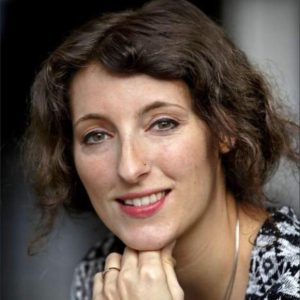
I am an archaeologist and a certified 3D modelling and animation specialist, with training and research/teaching experience in forensic archaeology, mortuary archaeology and digital archaeology. I currently hold a position as Assistant Professor at the Amsterdam Centre for Ancient Studies and Archaeology (ACASA) at the University of Amsterdam, where I teach digital and science-based archaeology at undergraduate and graduate levels. I am also the director of the 4D Research Lab (4DRL) at the Faculty of Humanities, University of Amsterdam: 4DRL works on the cutting edge of 3D visualization for archaeology and cultural heritage. Our research includes the development of virtual and augmented reality apps used for the interactive exploration of the material past. The lab holds a wide range of computing facilities, 3D scanners, and 3D modeling software, and has a team of technicians and researchers with a broad range of technical expertise in 3D visualization.
My research interests and expertise cover the archaeology of death and burial, forensic taphonomy, sensory archaeology, ethics regarding human remains in archaeology and museum contexts, and Caribbean archaeology. I also hold multiple postgraduate certifications in digital Forensic Facial Reconstruction, and have nearly completed N.V.O.A. Vesalius training as autopsy technician.
I have developed and currently lead an innovative program of human decomposition experiments at the Forensic Anthropology Center at Texas State University. This research combines actualistic taphonomic experiments with 3D visualization methods, and a variety of biomolecular, biogeochemical, geophysical and remote sensing techniques to improve methods, models and interpretations in the mortuary archaeology (especially archaeothanatology) and forensic archaeology. My current experimental research focuses on the simulation of mass graves: graves that contains the remains of multiple commingled individuals. The aim of the Mass Grave Project is to improve the (remote) detection, documentation, and excavation of forensic mass graves. I use a variety of 3D digital tools for documentation, analysis and visualization of taphonomic processes, including Structure from Motion photogrammetry, laser scanning, and 3D computer graphics and 3D animation.
Education and previous positions
I hold a BA and MA (hons.) in Archaeology (2005, 2007), and a PhD in Archaeology from Leiden University (2013).
My PhD research project was funded by the Dutch Research Council (NWO) within their ‘Toptalent’ program for ‘young creative talent’. I studied patterns of human dental wear and pathology in pre-colonial circum-Caribbean skeletons, in order to investigate foodways, health and disease, and craft activities.
After my PhD, I spent 9 months working as project manager at Leiden University during the grant negotiation and personnel recruitment phases of the ERC-Synergy Nexus 1492 project, as well as the NWO open competition “Island Networks” project, and HERA-Carib project. As project manager of these three large European research projects (with over 60 researchers), I was able to gain substantial management and administration experience. This position also taught me fundamental communication and coordination skills for working within large and culturally diverse research teams.
From 2013-2018 I held a postdoc position in the Caribbean Research Group in the ERC-Synergy NEXUS 1492 project. In this project, I studied transformations in mortuary practices across the historical divide (AD 1000-1800) in the circum-Caribbean.
In November 2017 my research on human decomposition and skeletal disarticulation was awarded the first Dutch National Postdoc Prize by the Royal Netherlands Academy of Science and Arts and the Royal Holland Society of Sciences and Humanities.
Boards and professional service
Council Member British Association for Human Identification (BAHID).
President of the Netherlands Association for Physical Anthropology (NVFA).
Listed as forensic archaeologist in the National Expertise databank of the Dutch Police Academy.
Member of the Archaeothanatology Working Group, an international network of researchers who use archeothanatology in their research and who work to develop the method.